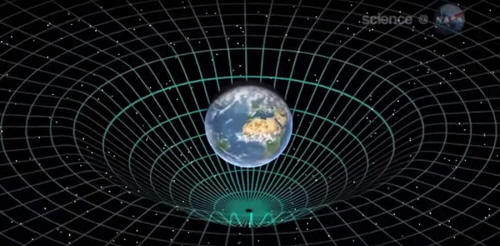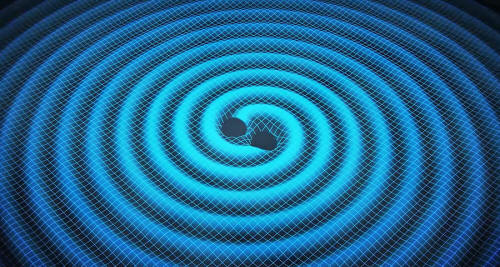|
and cause objects to
fall toward it.
When giving the coordinates for a location, most people provide the latitude, longitude and perhaps altitude. But there is a fourth dimension often neglected: time.
The combination of the physical coordinates with the temporal element creates a concept known as space-time, a background for all events in the universe.
Eric Davis specializes in faster-than-light space-time and anti-gravity physics, both of which use Albert Einstein's general relativity theory field equations and quantum field theory, as well as quantum optics, to conduct lab experiments.
The history of space-time
The idea that time and space are united is a fairly recent development in the history of science.
In the early 1900s, Hermann Minkowski built upon the earlier works of Dutch physicist Hendrik Lorentz and French mathematician and theoretical physicist Henri Poincare to create a unified model of space-time.
Einstein, a student of Minkowski, adapted Minkowski's model when he published his special theory of relativity in 1905.
Space-time breakthroughs
In special relativity, the geometry of space-time is fixed, but observers measure different distances or time intervals according to their own relative velocity.
In general relativity, the geometry of space-time itself changes depending on how matter moves and is distributed.
General relativity led to the science of cosmology, the next major breakthrough that came thanks to the concept of unified space-time.
He explained that general relativity predicted phenomena such as black holes and white holes.
It also predicts that they have an event horizon, the boundary that marks where nothing can escape, and the point of singularities at their center, a one dimensional point where gravity becomes infinite.
General relativity could also explain rotating astronomical bodies that drag space-time with them, the Big Bang and the inflationary expansion of the universe, gravity waves, time and space dilation associated with curved space-time, gravitational lensing caused by massive galaxies, and the shifting orbit of Mercury and other planetary bodies, all of which science has shown true.
It also predicts things such as warp-drive propulsions and traversable wormholes and time machines.
An improved understanding of space-time also led to quantum field theory.
When quantum mechanics, the branch of theory concerned with the movement of atoms and photons, was first published in 1925, it was based on the idea that space and time were separate and independent.
After World War II, theoretical physicists found a way to mathematically incorporate Einstein's special theory of relativity into quantum mechanics, giving birth to quantum field theory.
The theory gave rise to a quantum theory of electromagnetic radiation and electrically charged elementary particles - called quantum electrodynamics theory (QED theory) - in about 1950.
In the 1970s, QED theory was unified with the weak nuclear force theory to produce the electroweak theory, which describes them both as different aspects of the same force. In 1973, scientists derived the quantum chromodynamics theory (QCD theory), the nuclear strong force theory of quarks and gluons, which are elementary particles.
In the 1980s and the 1990s, physicists united the QED theory, the QCD theory and the electroweak theory to formulate the Standard Model of Particle Physics, the megatheory that describes all of the known elementary particles of nature and the fundamental forces of their interactions.
Later on, Peter Higgs' 1960s prediction of a particle now known as the Higgs boson, which was discovered in 2012 by the Large Hadron Collider at CERN, was added to the mix.
Experimental breakthroughs include the discovery of many of the elementary particles and their interaction forces known today, Davis said. They also include the advancement of condensed matter theory to predict two new states of matter beyond those taught in most textbooks.
More states of matter are being discovered using condensed matter theory, which uses the quantum field theory as its mathematical machinery.
The future of space-time
Scientists are continuing to improve their understanding of space-time by using missions and experiments that observe many of the phenomena that interact with it.
The Hubble Space Telescope, which measured the accelerating expansion of the universe, is one instrument doing so. NASA's Gravity Probe B mission, which launched in 2004, studied the twisting of space-time by a rotating body - the Earth.
NASA's NuSTAR mission, launched in 2012, studies black holes.
Many other telescopes and missions have also helped to study these phenomena.
On the ground, particle accelerators have studied fast-moving particles for decades.
Future missions and experiments will continue to probe space-time as well.
The European Space Agency-NASA satellite Euclid, set to launch in 2020, will continue to test the ideas at astronomical scales as it maps the geometry of dark energy and dark matter, the mysterious substances that make up the bulk of the universe.
On the ground, the LIGO and VIRGO observatories continue to study gravitational waves, ripples in the curvature of space-time.
|




